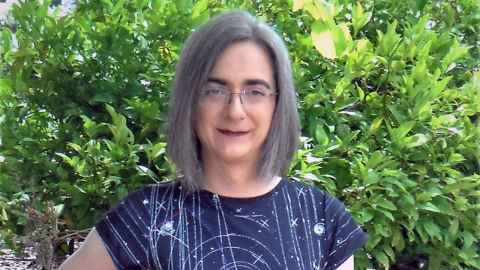Take 10 with... JJ Eldridge
Dr JJ Eldridge from the Department of Physics gives us 10 minutes of their time to discuss their research on binary stars and how these stars change our understanding of the Universe.

1. Describe your research topic to us in 10 words or less.
Exploding binary stars.
2. Now describe it in everyday terms!
At its core my research involves the evolution of stars. I make computer models of how they are born, live and die.
I then "observe" my models to compare them to real observations of the Universe to see if they match. If they do agree then the physics in our models is correct, if they don't agree we need to go back to our models and improve them.
We consider observations from individual stars in our own Galaxy; entire galaxies out to the edge of the observable Universe; supernovae (exploding dying stars); as well as gravitational wave transients from merging black holes and neutron stars.
One key aspect that sets our work apart from other similar projects around the world is that we consider binary stars. Most other modelers assume most stars are single, but many stars are in binaries orbiting each other - so they can interact and lead very different lives to a single star.
Binaries are really important. For example, if there were no binaries in the Universe there wouldn't be any of a certain type of supernova (type Ia) which produce most of the iron in the Universe which is a key element for life.
3. What are some of the day-to-day research activities you carry out?
At the moment the highest thing on my "to-do" list is to finish off four different papers that I've been working on. Otherwise, most of my research is writing computer programs to observe the stellar models I have previously computed so we can directly compare this to observations from telescopes.
I also have to calculate new models of stars and supernovae, in which I'm trying to improving the physics included in those models too. So it's really a lot of computer coding, then running these codes on both desktop and high performance computers, before I collate the results.
The issue with my code is that because stars are so important in the Universe we can predict most of the things we see in the Universe. So there is a lot we can do and writing it all up is time consuming!
4. What do you enjoy most about your research?
Definitely the moment you figure out how something works. As time has gone on, I've incorporated each new discovery into an ever increasing picture of how stars, especially binary stars, shape and affect the evolution of galaxies and the Universe.
5. Tell us something that has surprised or amused you in the course of your research.
How quickly colleagues in the same research field have accepted my gender transition. So far it's had very little impact on my career and - since beginning to be myself - my productivity has definitely increased.
6. How have you approached any challenges you’ve faced in your research?
The biggest challenge remains overturning the entrenched view in the astrophysics community that interacting binary stars aren't important. Researchers minds are slowly changing and accepting that anything based on single stars alone has some intrinsic error.
7. What questions have emerged as a result?
How do binary stars change our understanding of the Universe? At the moment the two strongest cases are that without binary stars the Universe would be much less abundant in iron, gold, silver and platinum. These elements (and other similar elements) are made when white dwarfs and neutron stars collide with each other in binary systems. Without binaries we might have very different chemistry on Earth.
8. What kind of impact do you hope your research will have?
I hope it will help us understand the Universe and answer part of the question of how, over 13.7 billion years, the Universe was able to evolve to give rise to us.
9. If you collaborate across the faculty or University, or even outside the University, who do you work with and how does it benefit your research?
My primary collaborator is Associate Professor Elizabeth Stanway from the University of Warwick in the UK. We were PhD students at the same place, she studied galaxies and I looked at dying stars.
Once we finished our PhDs she pointed out that my stellar models also included the bit where stars were still alive so I could model galaxies, and that started us on the road to where we are today.
I also have other collaborators in a number of small groups, all working out how binaries change the different things we want to study.
10. What one piece of advice would you give your younger, less experienced research self?
Be yourself, and try to think how your work fits into the big picture.